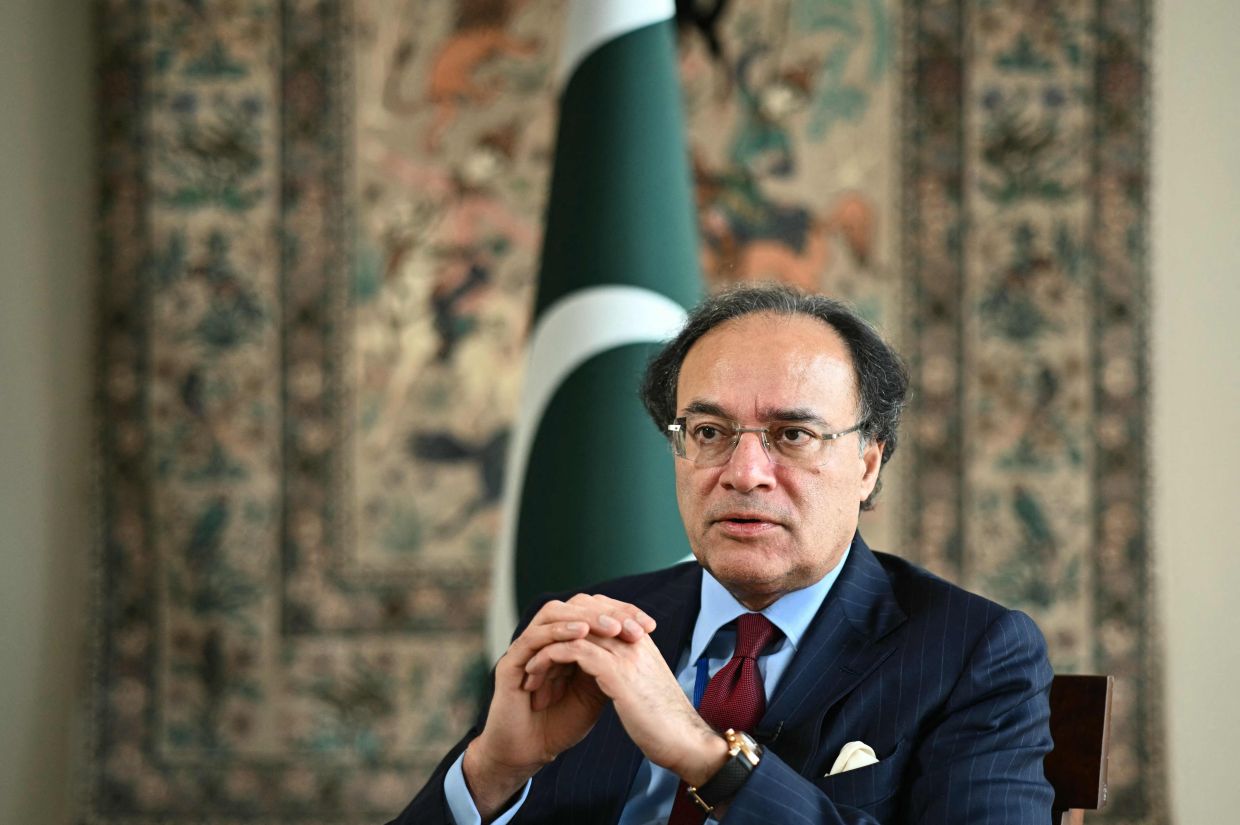PTBP Web Desk
Federal Minister for Finance and Revenue Muhammad Aurangzeb has described the blue economy as a “game changer” for Pakistan’s long-term economic growth, highlighting its potential to reach $100 billion by 2047. He reaffirmed the government’s commitment to ensuring policy continuity and sustainable development across maritime sectors.
Aurangzeb made these remarks during a virtual address at the Pakistan International Maritime Expo & Conference (PIMEC), organized by the Pakistan Navy and the Ministry of Maritime Affairs at the Expo Centre Karachi. The event brought together key stakeholders, policymakers, and international partners to explore the future of Pakistan’s maritime and coastal development.
The finance minister noted that Pakistan’s maritime sector currently contributes only 0.4% to 0.5% to the national GDP, roughly $1 billion, but it holds “enormous potential for expansion.” The World Bank defines the blue economy as the sustainable use of ocean resources for economic growth, improved livelihoods, and environmental conservation.
Aurangzeb endorsed the Ministry of Maritime Affairs’ vision to transform the sector into a $100 billion industry by 2047, aligning with Pakistan’s centennial year and the broader national goal of becoming a $3 trillion economy. He called the target “ambitious but achievable,” emphasizing that it requires a clear roadmap and consistent implementation.
The minister underlined the importance of modernizing fisheries and aquaculture, areas that can significantly boost exports and employment. He highlighted the need for value-added seafood processing, improved cold-chain logistics, and the adoption of international hygiene standards to make Pakistan’s seafood globally competitive.
Currently, Pakistan’s seafood exports stand at around $500 million, but Aurangzeb said this figure could easily rise to $2 billion within three to four years under the National Fisheries and Aquaculture Policy. The policy, developed in partnership with the Food and Agriculture Organization (FAO), aims to promote sustainable fishing practices, innovation, and regional cooperation.
For context, Pakistan’s vast coastal belt of over 1,000 kilometers offers opportunities for fish farming, seafood processing plants, and marine-based tourism. (See: Ministry of Maritime Affairs).
Aurangzeb also emphasized the modernization and digitization of Pakistan’s major ports, including Karachi Port, Port Qasim, and Gwadar Port. These upgrades are vital for improving trade efficiency and regional connectivity.
“Digitally enabled and globally aligned port systems can transform Pakistan’s role in regional trade,” he said, stressing that smart port management, automation, and data-driven logistics would attract foreign investment.
Gwadar Port, part of the China-Pakistan Economic Corridor (CPEC), is already positioned as a regional trade hub. The minister urged greater integration between port operations and industrial zones to boost export competitiveness. (Learn more about CPEC’s trade potential).
Beyond trade and fisheries, Aurangzeb highlighted the importance of renewable energy projects within the blue economy. He pointed to tidal energy and offshore wind power generation as future growth drivers that can diversify Pakistan’s energy mix and reduce dependence on imported fuel.
He also called for exploring innovative financing mechanisms such as blue bonds and blended finance to fund sustainable projects, including marine biodiversity conservation and coastal resilience. These financial tools, used globally, can attract private sector participation in green and blue initiatives.
Shifting focus to the broader economy, Aurangzeb said Pakistan has achieved notable progress in restoring macroeconomic stability. He shared that the exchange rate remains stable and foreign reserves have increased to more than $14 billion, covering over two and a half months of imports.
“Inflation has largely been under control, despite temporary spikes caused by recent floods,” he noted, adding that the policy rate has been adjusted accordingly.
He further mentioned that all three leading global credit rating agencies—Moody’s, Fitch, and S&P Global—have upgraded Pakistan’s outlook to ‘stable’ for the first time in nearly three years. “After a hiatus of 2.5 years, the agencies are fully aligned on Pakistan’s economic direction,” the minister said.
Aurangzeb also highlighted Pakistan’s ongoing engagement with the International Monetary Fund (IMF), stating that the recently concluded staff-level agreement in Washington has boosted global confidence in Pakistan’s reform agenda and fiscal discipline.
The finance minister emphasized that Pakistan must leverage its long-standing relationships with China, the United States, and Gulf nations—especially Saudi Arabia and the UAE—to promote greater trade and investment flows.
He encouraged moving from government-to-government cooperation toward private sector-led partnerships, particularly in the maritime, renewable energy, and infrastructure sectors.
Concluding his address, Aurangzeb reaffirmed that the government’s commitment to policy consistency and institutional stability would be crucial for realizing the blue economy’s full potential.
“The journey toward a $100 billion blue economy is not just an economic target; it’s about creating sustainable livelihoods, preserving marine ecosystems, and positioning Pakistan as a regional maritime leader by 2047,” he said.



